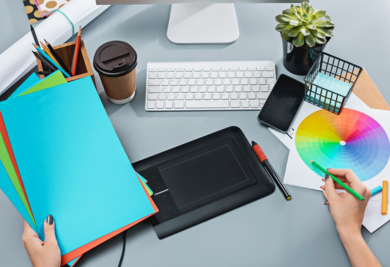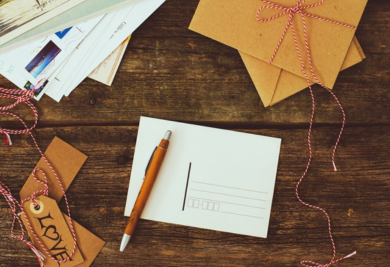Comprehensive Understanding! Popularly Used of Paper for Printing

When it comes to “paper,” many people may only be familiar with using A4 paper for printing or photocopying. However, in reality, many other types of paper are used for various purposes. Each type of paper is suitable for different printing applications. Therefore, having a comprehensive understanding of the type of paper can help in selecting the most appropriate one for specific needs.
In this article, we have compiled information on the various types of paper that are commonly used. So if you are interested in the topic of how many types of paper are there in the printing industry, read on to know more. First of all, let’s start with the basics:
Types of Paper
1. Art Paper
Art paper is a thick and dense paper that has been coated to create a smooth surface. They are available in both single-sided and double-sided coated variations. Art paper produces beautiful and vibrant colours when printed, making it suitable for full-colour printing. There are several subtypes of art paper, which can be further divided as follows:
- Art Glossy Paper - This type of paper has a smooth texture. It can closely replicate the true colour and can be effectively coated for a glossy look. This type of paper is available in various thicknesses from 85 grams, 90 grams, 100 grams, 105 grams, 120 grams, 130 grams, 140 grams to 160 grams.
- Art Matte Paper - This type of paper has a smooth texture and produces prints with a reflective sheen, giving out a feeling of luxury. This type of paper is available in various thicknesses from 85 grams, 90 grams, 100 grams, 105 grams, 120 grams, 130 grams, 140 grams to 160 grams.
- Art Card Paper - This type of art paper is thick, starting from 190 grams and above, making it ideal for printing materials that require substantial weight, such as posters, postcards, and book covers. Additionally, there is single-sided art card paper, suitable for printing projects that require printing on only one side, such as packing boxes.
2. Bond Paper
Bond paper is a smooth-textured paper that has undergone bleaching. It is commonly used for single-colour printing or can be used for full-colour printing, although the result may not be as vibrant as art paper due to its lack of gloss. However, bond paper allows for easy use of pens and pencils on its surface. It is suitable for printing the content of books and is available in popular thicknesses ranging from 55 grams, 60 grams, 70 grams, 80 grams, 100 grams up to 120 grams.
3. Eye-Friendly Paper
Eye-friendly paper is a lightweight type of paper, ideal for portability. It is a beige, leaning towards a soft yellow tone, and is not as white or smooth as regular paper. This paper is designed to absorb light and prevent glare, thus helping to protect and rest the eyes of readers. Moreover, the paper’s colour is durable and does not easily fade, making it suitable for printing books, magazines, and notebooks, as it maintains a fresh appearance.
4. Cardboard Paper or Chipboard
Cardboard paper or chipboard is a thick and rigid type of paper made from wood pulp and recycled paper, resulting in a rough and dark grey surface. It has a weight starting from 430 grams per square meter and above, due to its thickness, Because of its substantial properties, it is ideal for creating the covers of books, desk calendars or product packaging.

In addition to familiarizing yourself with different paper types, it is essential to consider certain paper characteristics that significantly impact outcomes. Here are some key attributes to take into account.
Paper Thickness
The thickness of paper has a significant impact on printing results. Thicker paper is typically more durable and less prone to tearing, making it ideal for projects that require a more substantial feel, such as business cards or invitation cards. Thinner paper allows more light to pass through, resulting in somewhat translucent prints, unlike thicker papers, and with heavy colouring the image can appear on another side of the paper. The choice of paper thickness should align with the printing project’s requirements, as using thick paper for book printing, for example, will increase the book’s weight and thickness accordingly.
Paper Surface Texture
This directly affects the visual appeal of the printed material. Textures can range from ultra-smooth, like coated glossy papers, to heavily textured, like linen or embossed papers. The smoother the paper’s surface, the clearer and more aesthetically pleasing the printed images or text will appear. Textured papers are often used for artistic or upscale projects where a unique tactile feel adds to the overall experience. However, certain types of papers with textured surfaces, when appropriately chosen, can complement the concept of environmental conservation.
Paper Opacity
The light opacity of the paper is another critical attribute that influences printing. High-opacity papers are preferable for double-sided printing as they prevent the text or images from one side from being visible on the other. Papers with lower opacity allow the visibility of text or images to some extent on the other side of the sheet. This feature is particularly important for documents like reports, brochures, and menus, where readability is key.
Color Tone of Paper
Ordinarily, white and cream-coloured papers are the most popular choices used in various applications. However, exploring different color tones, such as pastels or deep colors, can add a unique flair to your project. However, having a range of colour tones available to match customers’ specific needs can expand the possibilities for their usage. Choosing the right color tone can significantly impact the mood and aesthetic of the printed material, especially in creative projects like invitations or marketing materials.
For high-quality printing results, it is crucial to choose a professional who understands the different paper types well! Gogoprint, the printing expert, offers affordable printing solutions for postcards, business cards, flyers, magazines, and more. They provide free paper sample sets for you to explore options. Easy and prompt ordering with credit card payment is available. For further inquiries, please do not hesitate to contact us at +65 3159 3042 or get in touch through email at [email protected].


















